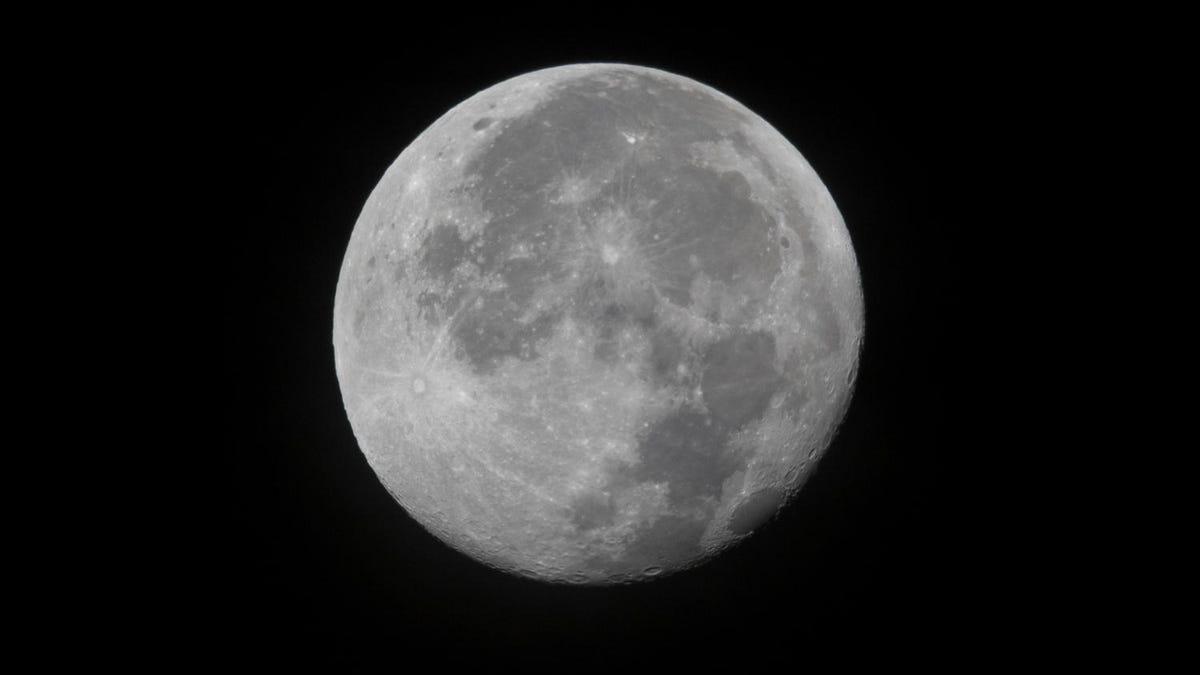
Fall is here, and that means you can catch a number of celestial events if you live in the Northern Hemisphere. That means you can mark October’s calendar with major sightings like a supermoon, a comet, meteor showers and even a major NASA mission launch. Don’t miss a single event and keep your eyes on the sky. Here’s a calendar of events and how to participate in these cosmic happenings so you can catch some of these rare events before they disappear.
Oct. 2: Annular solar eclipse
An annular solar eclipse created a “ring of fire.”
A “ring of fire” eclipse obscured the sun on Oct. 2. The eclipse mostly took place over ocean waters, but the full ring effect was be visible from parts of Argentina and Chile. Other spots were treated to a partial eclipse. Here’s everything you need to know about the ring of fire. Just because you missed it doesn’t mean there aren’t pictures to satisfy that FOMO.
Oct. 7-8: Draconids meteor shower peaks
“Shooting stars” will be dancing across the night sky throughout the month. Meteor showers happen when little bits of icy comets or rocky asteroids enter Earth’s atmosphere and turn into bright streaks of light. The pieces of space debris are called meteoroids. When they become fireballs, they’re called meteors. If part of a meteoroid reaches the ground, it’s a meteorite.
Here are all the named meteor showers active through the end of the year and how to see them. For October, pay special attention to the Draconids and Orionids. The Draconids shower peaks around Oct. 7 and Oct. 8, but runs from Oct. 6 to 10. The Draconids shower doesn’t always deliver a spectacular show, but has the potential to generate an impressive flurry in some years. Aim for a place with dark skies and minimal light pollution.
Oct. 10: NASA launches Europa Clipper
NASA is targeting Oct. 10 for the fiery launch of its Europa Clipper mission. The agency will send a spacecraft to study Jupiter’s weird and fascinating ocean moon Europa, a place that may potentially be habitable for microbial life. Liftoff is scheduled for 9:31 a.m. PT on a SpaceX Falcon Heavy rocket from the Kennedy Space Center in Florida. NASA will livestream the launch. Launches are sometimes postponed for technical or weather-related issues.
Oct. 12: Comet A3 closest approach to Earth
Comet A3 makes a spectacular appearance in this image from NASA astronaut Don Pettit taken from the International Space Station.
Comet Tsuchinshan-ATLAS is also called C/2023-A3 or Comet A3 for short. This icy visitor survived a close approach to the sun and may develop into a celestial celebrity for viewers on Earth. Astrophotographers in the Southern Hemisphere and astronauts on the International Space Station have already snapped the comet’s portrait. The Northern Hemisphere may get some good viewing opportunities in October.
Comet A3’s closest approach to Earth happens on Oct. 12. You may need a telescope or a good pair of binoculars, but there’s a chance the comet could be visible to the naked eye.
“Comet A3 has generated so much excitement about how bright and visible it might be that it has even been billed as the ‘comet of the century’ in some quarters,” the Royal Astronomical Society said in a statement on Sept. 30. It’s too soon to tell if it will live up to the hype. The RAS recommends looking west just after sunset from Oct. 12-Oct. 30. Happy comet hunting!
Oct. 17: Full Hunter’s ‘supermoon’
NASA highlights the phases of the moon for October 2024.
The October full moon is known by its nickname of the Hunter’s Moon. This year’s Hunter’s Moon is a “supermoon,” which means the moon is close to Earth and may appear slightly bigger and brighter than normal. The size difference is subtle. Any full moon is a delightful experience, but it’s especially fun to cheer on a supermoon. The Hunter’s Moon will reach peak illumination at 4:26 a.m. PT on Oct. 17, according to the Old Farmer’s Almanac. For best viewing, look for the moon after sunset that evening.
Oct. 20-21: Orionids meteor shower peaks
The Orionids meteor shower is known for bright streaks. It’s one of the top meteor showers of the year.
The Orionids meteor shower reaches maximum on Oct. 20-21, but runs through the entire month. Expect 10-20 meteors per hour at its peak if you have ideal viewing conditions. This shower tends to be more reliable than the Draconids.
Bonus: Earth has a mini-moon
Earth welcomed a temporary tiny moon into orbit in late September. The small asteroid will stick around until late November. It’s too small to spot it with amateur astronomy gear, but it’s up there and makes for a fun talking point. Here’s everything you need to know about our visiting mini-moon.
